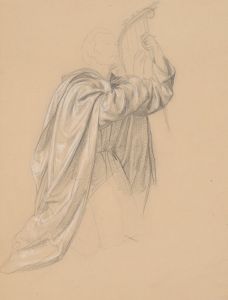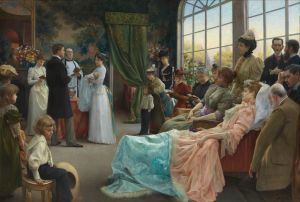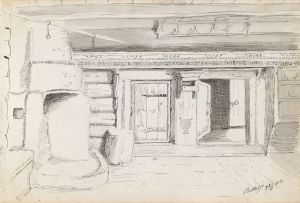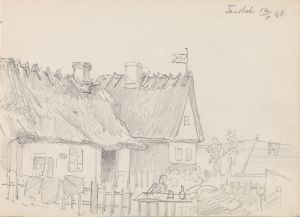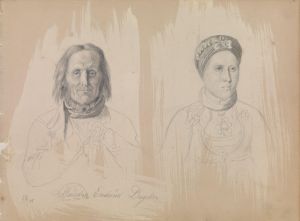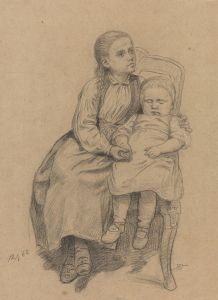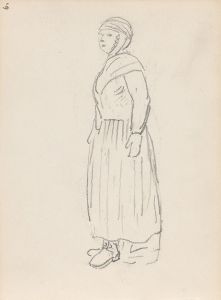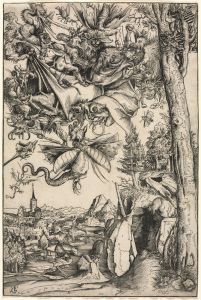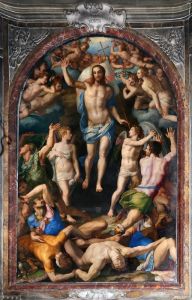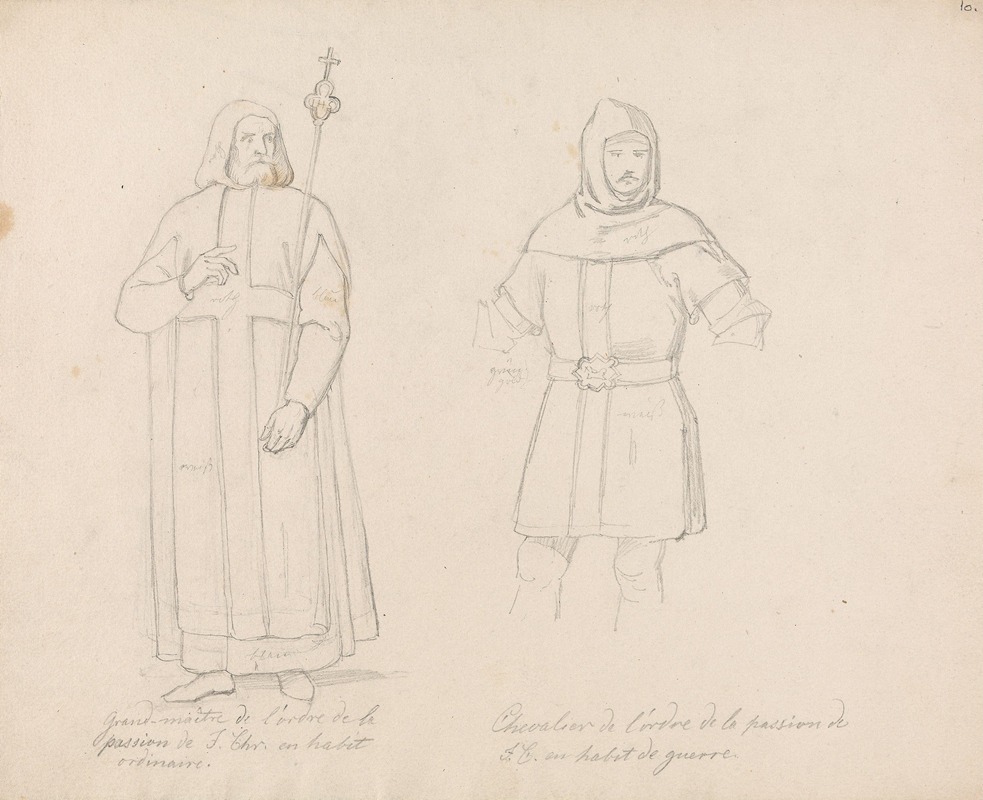
Stormester og ridder av pasjonistordenen
A hand-painted replica of Adolph Tidemand’s masterpiece Stormester og ridder av pasjonistordenen, meticulously crafted by professional artists to capture the true essence of the original. Each piece is created with museum-quality canvas and rare mineral pigments, carefully painted by experienced artists with delicate brushstrokes and rich, layered colors to perfectly recreate the texture of the original artwork. Unlike machine-printed reproductions, this hand-painted version brings the painting to life, infused with the artist’s emotions and skill in every stroke. Whether for personal collection or home decoration, it instantly elevates the artistic atmosphere of any space.
Adolph Tidemand was a prominent Norwegian painter in the 19th century, known for his significant contributions to the Romantic Nationalism movement in Norway. His works often depicted Norwegian folk life and traditions, capturing the essence of the country's cultural heritage during a time of burgeoning national identity. One of his lesser-known works is "Stormester og ridder av pasjonistordenen," which translates to "Grand Master and Knight of the Passionist Order."
Unfortunately, there is limited information available about this specific painting, as it does not appear to be one of Tidemand's most documented or studied works. Adolph Tidemand's oeuvre primarily includes paintings that focus on rural life, historical scenes, and portraits, with his most famous work being "Brudeferden i Hardanger" (The Bridal Procession in Hardanger), created in collaboration with Hans Gude. This particular painting is celebrated for its depiction of a traditional Norwegian wedding procession set against the dramatic landscape of the Hardanger fjord.
Tidemand was born on August 14, 1814, in Mandal, Norway, and he pursued his artistic education in Copenhagen and later in Düsseldorf, Germany. The Düsseldorf School of Painting, where he studied, was known for its detailed and realistic style, which influenced Tidemand's approach to capturing the nuances of Norwegian life and landscapes. His time in Germany also exposed him to various artistic trends and techniques, which he skillfully integrated into his works.
Throughout his career, Tidemand was dedicated to portraying the everyday lives of Norwegian people, often focusing on themes of family, religion, and tradition. His paintings are characterized by their attention to detail, vibrant colors, and the ability to convey the emotional depth of his subjects. Tidemand's work played a crucial role in shaping the visual narrative of Norwegian identity during the 19th century, a period marked by a growing sense of nationalism and cultural pride.
While "Stormester og ridder av pasjonistordenen" is not widely recognized or extensively documented, it can be assumed that, like many of Tidemand's works, it reflects his interest in historical and cultural themes. The title suggests a focus on a figure of authority within a religious or chivalric order, which aligns with Tidemand's interest in depicting figures of significance and their roles within society.
Adolph Tidemand's legacy continues to be celebrated in Norway and beyond, with his works held in high regard for their contribution to the understanding and appreciation of Norwegian culture and history. His paintings are housed in various museums and collections, including the National Gallery in Oslo, where they continue to be studied and admired by art enthusiasts and scholars alike.
In summary, while specific details about "Stormester og ridder av pasjonistordenen" are scarce, Adolph Tidemand's broader body of work provides valuable insights into the cultural and historical context of 19th-century Norway. His dedication to capturing the spirit of his homeland through art has left an indelible mark on the nation's artistic heritage.





